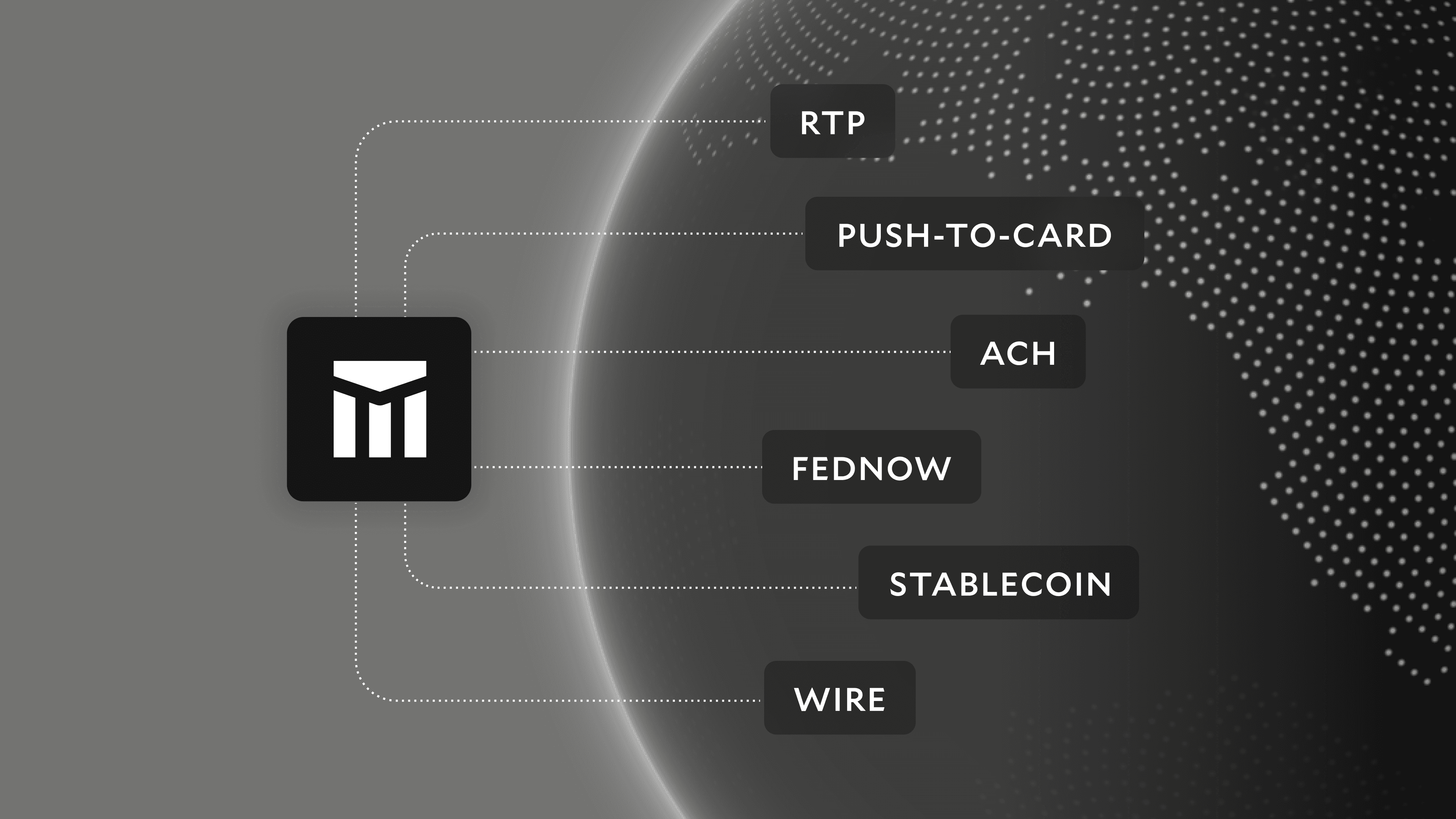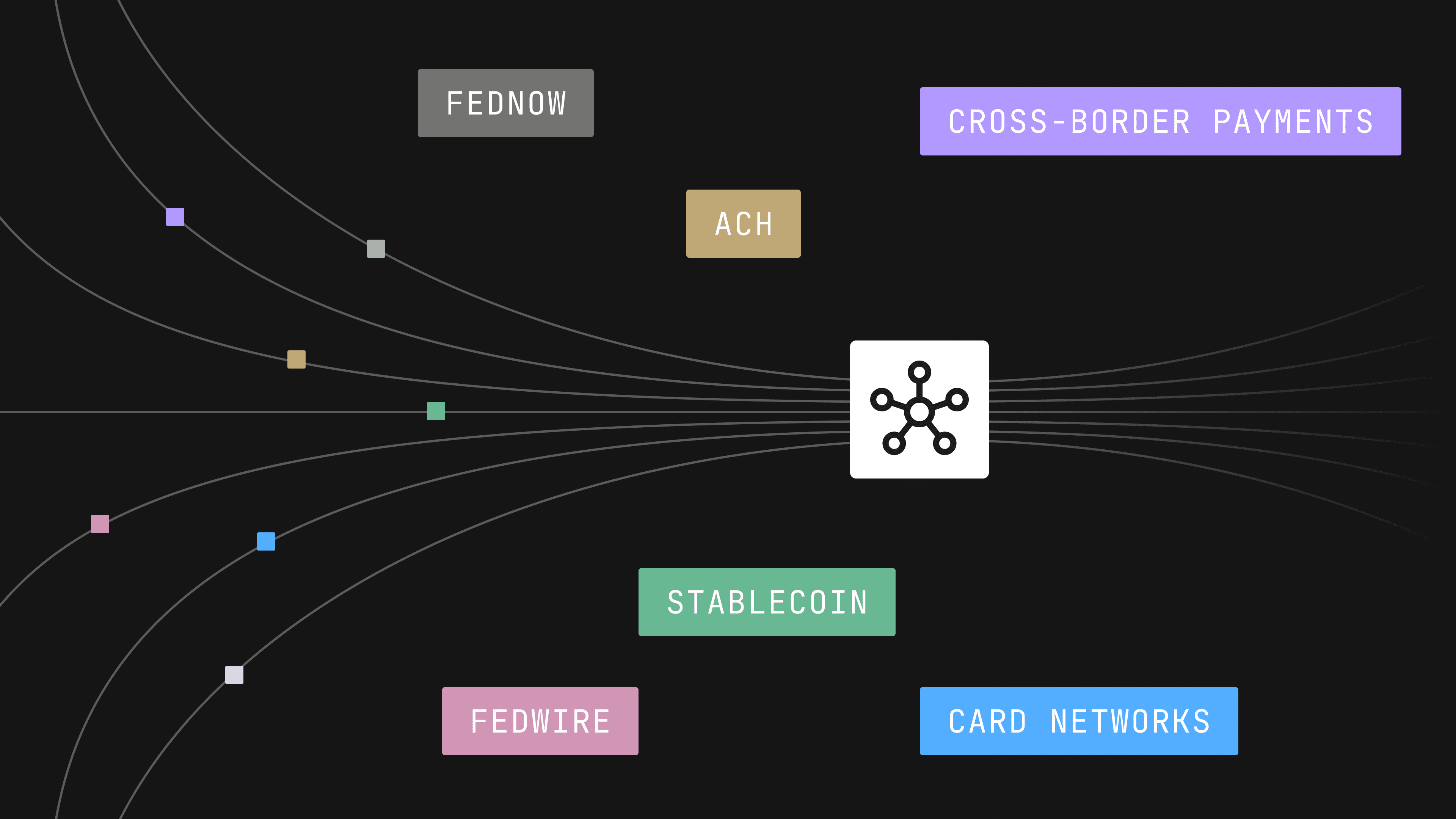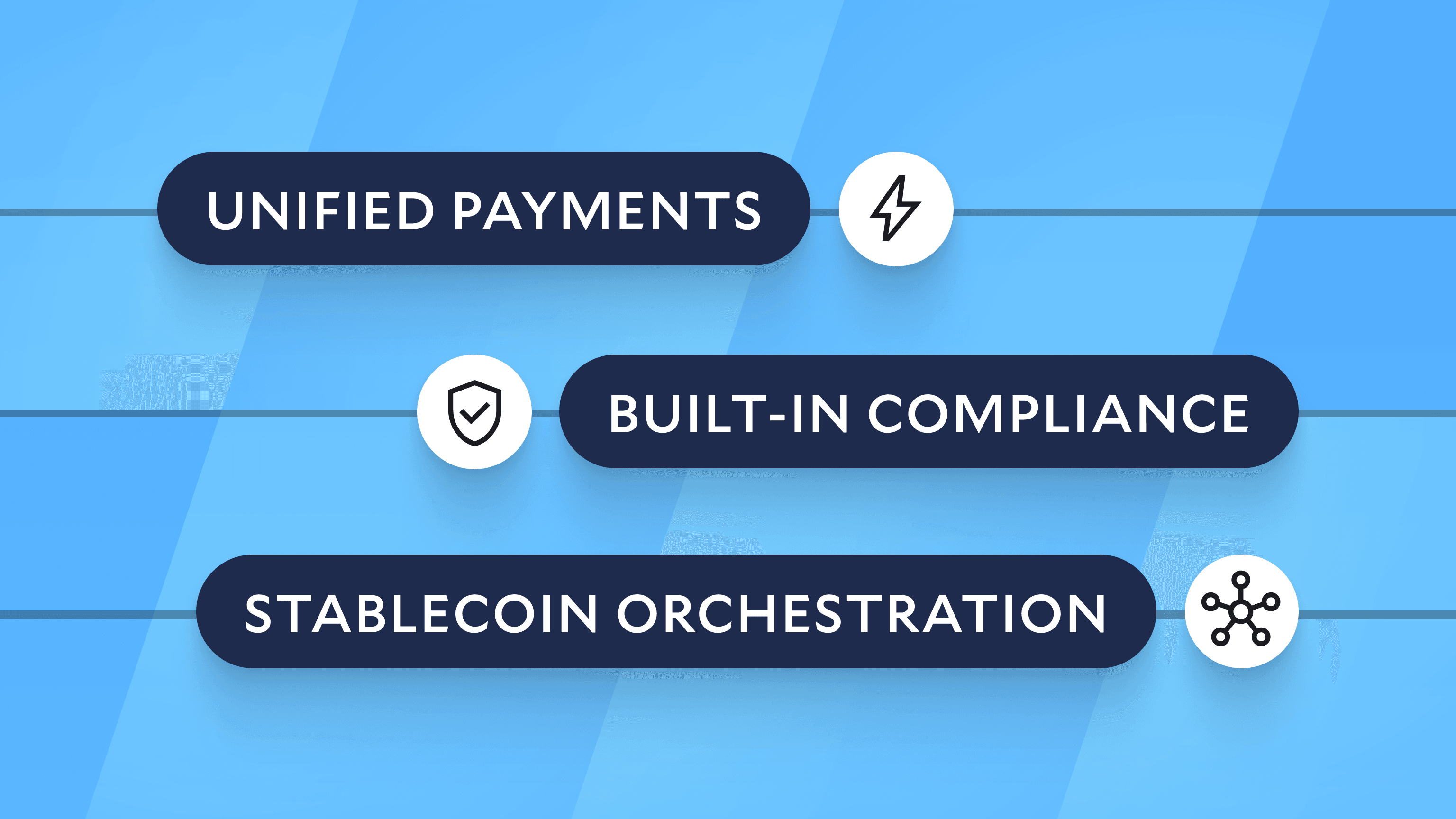Modern Treasury and Paxos Make It Easier for Businesses to Move Money with Stablecoins.Learn more →
Regulating Stablecoins: Implications of the GENIUS Act
This article examines the GENIUS Act's approach to stablecoin regulation, current market risks, and comparative international regulatory frameworks. Learn how upcoming legislation may affect digital asset integration with traditional banking systems.

Stablecoins bridge traditional banking and cryptocurrency markets by maintaining consistent value when pegged to assets like the US dollar or gold. Most achieve stability through fiat-collateralization (keeping an equal amount of regular money in reserve), crypto-collateralization (using extra cryptocurrency as backup), or automatic systems that increase or decrease the available supply based on how many people want to buy or sell.
With over $250 billion in market value, stablecoins facilitate faster cross-border transactions, reduce friction in cryptocurrency trading, and provide financial services to underserved populations. This rapid growth has occurred largely without comprehensive oversight, creating significant risks for consumers and the broader financial system. The TerraUSD collapse in 2022 that wiped out nearly half a trillion dollars from the digital market demonstrated how quickly regulatory failures can cause a massive ripple effect.
Stablecoins face critical vulnerabilities including:
- Depegging events that break their connection to underlying assets
- Liquidity crises that prevent consumers from cashing out holdings
- Redemption failures due to insufficient collateral
Comprehensive stablecoin regulation is finally on the horizon. The bipartisan GENIUS Act, which stands for Guiding and Establishing National Innovation for US Stablecoins, recently passed the Senate Banking Committee with strong support. This legislation has potential to revolutionize digital asset markets and strengthen the bridge between cryptocurrency and traditional finance.
The Case for Stablecoin Regulation
The GENIUS Act represents an attempt to balance necessary safeguards against the need for innovation in financial markets.

Enhanced stablecoin regulation aims to provide increased trustworthiness and reliability of stablecoin offerings, which could encourage the entry of traditional financial institutions into the stablecoin market.
The legislation balances essential consumer protections with the space needed for financial innovation. This balanced approach is already attracting established financial institutions to the stablecoin market, with Fidelity Investments now testing its own stablecoin offering.
International Approaches to Stablecoins
Other countries have also taken approaches to regulate and manage stablecoins:

European Union
The European Union introduced the Markets in Crypto-Assets (MiCA) regulation to unify the management and legality of crypto-assets across all EU members. Some of the requirements include that the crypto-asset issuers must:
- Provide comprehensive information to the public, including details about risk.
- Get authorization from national authorities to create a stablecoin.
- Operate under national authorities’ supervision to ensure compliance with all regulatory standards.
Additionally, MiCA created rules to protect consumers against market manipulation and fraud.
United Kingdom
The United Kingdom and His Majesty's Treasury (HM Treasury) have started planning to integrate stablecoins into financial services frameworks. So far, there have been suggestions to add stablecoins to existing regulations, such as:
- The Payment Services Regulations 2017: The proposed addendum would strengthen the safeguarding regime for customer funds by providing greater clarity on the status of these funds and enabling swifter return of customer funds in the event of an institution's insolvency.
- The Financial Services (Banking Reform) Act 2013: The proposed addendum would expand systemic risk monitoring frameworks, building on the existing structure where the Bank of England has macro-prudential responsibility for oversight of the financial system and day-to-day prudential supervision of financial services firms managing significant balance-sheet risk.
- The Electronic Money Regulations 2011: The proposed addendum would update regulations to align with the post-Brexit UK regulatory environment and allow UK payment institutions and electronic money institutions to deposit relevant funds with certain non-European Economic AArea (EEA) banks in addition to UK and most EEA banks.
- Part 5 of the Banking Act 2009: The proposed addendum would update provisions related to stabilization powers that the Bank of England is able to exercise when necessary to protect the public interest, particularly in situations where there is financial assistance to a bank to address serious threats to UK financial system stability.
The UK is expected to take a phased approach to stablecoin management and the creation of a new regulatory framework for cryptoassets.
Singapore
In the second quarter of 2024, Singapore saw nearly $1 billion in payments made with digital assets. Singapore is one of the world's most digitally engaged countries and has been attempting to establish itself as a central hub for digital assets.
The Monetary Authority of Singapore (MAS) announced and established a regulatory framework for single-currency stablecoins (SCS) in August 2023. Issuers are expected to comply with several requirements, including:
- Capital Requirements
- Issuers must maintain a minimum base capital of 1 million Singapore dollars or 50% of annual operating expenses, whichever is higher. The capital must be held in cash, short-term Singapore Government Securities, or other highly liquid assets approved by MAS.
- Capital reserves must be maintained in segregated accounts separate from operating funds. Issuers must undergo annual capital adequacy assessments and report results to MAS.
- Disclosure Statements
- Issuers must provide comprehensive disclosure documents that include:
- The legal structure of the stablecoin operation.
- Detailed explanation of the redemption process, including any fees or waiting periods.
- Full disclosure of the reserve composition and custody arrangements
- Identification of all third-party service providers involved.
- Quarterly attestation reports on reserve assets by independent auditors.
- Clear risk warnings about potential value fluctuations and technology risks.
- Issuers must provide comprehensive disclosure documents that include:
- Redemption Requirements
- Issuers must guarantee redemption at par value (1:1) with the pegged currency.
- Redemption must be processed within five business days from request submission.
- No minimum redemption amount can be imposed that would prevent retail users from redemption.
- Multiple redemption channels must be maintained to ensure system resilience.
- Transparent redemption procedures must be established for both normal operations and stressed market conditions.
- Clear redemption hierarchy must be established in case of insolvency or operational failure.
- Value Stability
- Reserve assets must be cash, cash equivalents, or short-term sovereign debt from AAA credit-rated countries. At least 50% of reserves must be held in cash or overnight deposits.
- Asset-liability matching requirements ensure reserves match outstanding stablecoin issuance. Daily reporting on reserve levels to ensure continuous compliance.
- Stress testing requirements to demonstrate resilience against market shocks.
- Implementation of an early warning system for potential value instability.
- Prohibition against algorithmically-maintained stablecoins without full backing.
Japan
Japan's Financial Services Agency (FSA) has introduced several regulatory frameworks that regulates stablecoins and crypto assets starting as early as 2017. The FSA and the Payment Services Act (PSA) require stablecoin issuers to be licensed as Electronic Payment Instruments Exchange Service Providers (EPIESP).
In Japan, only banks, trust companies, and fund transfer service providers can issue "digital-money type stablecoins." Additionally, stablecoins are issued at a price that is linked to at least one fiat currency, and redemption is promised at par, maintaining value.
Stablecoin Regulation: Looking Forward
The GENIUS Act represents more than regulatory compliance; it signals the mainstream acceptance of stablecoins as a legitimate means to move money. With congressional approval expected in 2025, this legislation will accelerate the integration of digital assets into traditional banking, fostering a secure environment for innovation while protecting consumer interests.
The future of finance is being written now, with regulated stablecoins serving as the foundation for a more accessible, efficient global financial system. Organizations exploring how stablecoins might enhance their financial operations can reach out to us for guidance on integrating digital assets into their existing business models.








